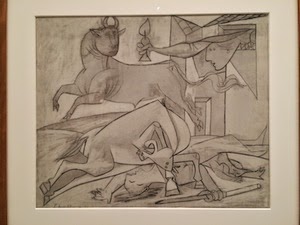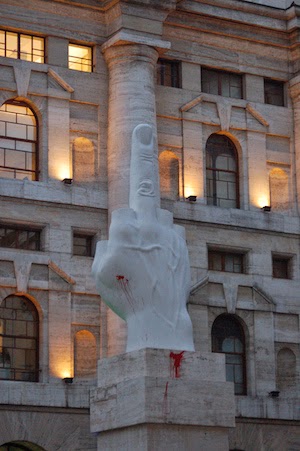 |
| Picasso’s “Guernica” Stock Image from  |
| Study for Guernica, Picasso |
Picasso intended for “Guernica” to capture the horror of that moment, and I was surprised at how effective it is even decades after the event. It’s a stark scene, all in gray, as if the jumble of distorted figures are covered in a gray ash or dust. Everywhere you look there are images of people screaming, limbs stretched out, people and animals alike falling or dismembered.
Perhaps the most emotional of the images is that of a woman clutching a baby, her head grotesquely and unnaturally bent back, her vacant eyes distorted in a lifeless stare, the baby still in her arms.
 |
| Study for Guernica, Picasso |
It succeeds–effectively–in leaving you with a sense of horror, disgust, and dismay.
Standing there with the throngs studying Picasso’s scene of destruction, I was reminded of another emotion-evoking piece of art I once came across. My brother-in-law and I were walking through Milan, Italy and came through a square to find a striking sculpture, the creator of which we do not know. It’s of a massive hand making what most people in the western world would consider an obscene gesture. But upon closer inspection, the unfortunate subject isn’t purposefully making an obscene gesture at all: their fingers have been cut off, leaving only the middle one, and the depiction is complete with blood on the statue and it’s massive stone stand. The imagery of mutilation can be disgusting, but the resulting message is startling and obvious: if you maim and mutilate me, all you’ll accomplish is leaving me filled with hate for you.
You don’t have to like it or “Guernica’s” message, but if it tweaks you just a bit, the artist achieved their goal.
 |
| Sculpture in Milan, Italy, artist unknown |



